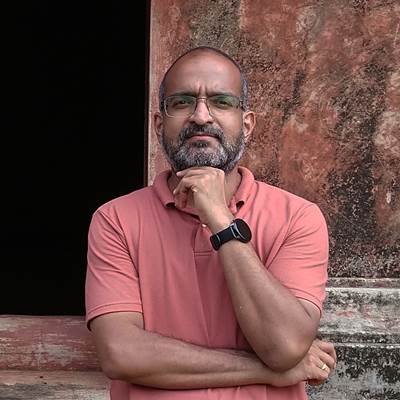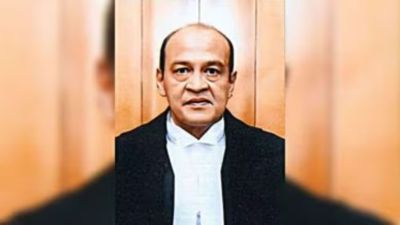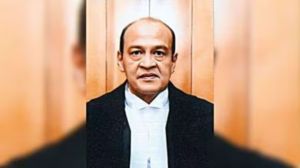Click here to join Express Pune WhatsApp channel and get a curated list of our stories
How the Pune-Mumbai Expressway was a death trap in 2024
In 2024, the Pune-Mumbai Expressway witnessed more accidents than the previous year. In a series, The Indian Express looks into the issues plaguing the high-speed corridor and how the authorities are addressing the concerns.
 Yashwantrao Chavan E-way’s average daily traffic load is 1.5 lakh vehicles. (Express Photo/Pavan Khengre)
Yashwantrao Chavan E-way’s average daily traffic load is 1.5 lakh vehicles. (Express Photo/Pavan Khengre)In a worrying trend reversal, the Pune-Mumbai Expressway has seen a sharp increase in accidents, fatalities, and serious injuries in 2024 when compared to 2023. Data from the Maharashtra Highway Traffic Police for last year shows a 26 per cent rise in fatalities and an even bigger spike of 60 per cent in serious injuries, raising questions about the safety of commuters on one of India’s busiest corridors connecting two major economic and industrial centres.
Highway traffic officials attribute these upticks to a combination of issues, including speeding, disregard for vehicle health and structural engineering irregularities. Officially named the Yashwantrao Chavan Expressway, the six-lane, high-speed corridor connecting Kalamboli in Raigad near Mumbai to Kiwale near Pune was inaugurated in 2002. The expressway has an average traffic load of 1.5 lakh vehicles every day, with a significant increase seen during weekends and holidays.
Speeding to driver fatigue: Authorities on alert
The spike in the number of accidents has put the highway traffic police on alert. The rise in fatalities was extensively discussed in recent briefings, officials revealed, and the focus is back on taking action against speeding, lane cutting, and wrongful halting.
 State Highway Police officials conduct checks on vehicles on the expressway at Khandala Friday; (below) A speed gun being used on the expressway to check for speeding vehicles. Express Photo/Pavan Khengre
State Highway Police officials conduct checks on vehicles on the expressway at Khandala Friday; (below) A speed gun being used on the expressway to check for speeding vehicles. Express Photo/Pavan Khengre
Suresh Kumar Mekala, Additional Director General of Police, Traffic, Maharashtra, said that while there was a reduction in accidents and fatalities in one section of the expressway before the Borghat, there was an increase in accidents and deaths in the Borghat section “especially between the 30 and 40 km mark from Kalamboli in Raigad”.
“We have held meetings with all stakeholders to analyse the data and come up with remedial measures. The analysis suggests that heavy vehicles face issues of brakes and overheating on the downward and upward slopes in the Borghat section, leading to accidents,” he added.
Mekala also flagged concerns of pedestrians on the Expressway. “These violations point to breaches on the Expressway, especially in the areas near the food plazas. We are discussing the issue of these breaches and ways to curtail them with the MSRDC (Maharashtra State Road Development Corporation). Another major concern has been speeding. To address this, our Traffic Aid Posts or TAPs are conducting stringent action by deploying multiple speed radars along the entire length of the Expressway,” he said.
 Highway traffic officials attribute these upticks to a combination of issues, including speeding, disregard for vehicle health and structural engineering irregularities.
Highway traffic officials attribute these upticks to a combination of issues, including speeding, disregard for vehicle health and structural engineering irregularities.
Mekala said that vehicle health and driver fatigue were other areas of concern. “We are trying to address them through extensive awareness campaigns. We have observed that a large chunk of the accidents have taken place between the window of 3 am to 6 am. We are focussing on the action against speeding and focus is back on vehicle health and driver alertness,” he added.
‘Don’t limit enforcement to safety weeks’
Independent researcher Tanmay Pendse, who lost his brother and Marathi actor Akshay Pendse and nephew in an expressway accident in December 2012 and has been doing extensive work on highway safety since, says strict enforcement of rules is mandatory.
“The commute on high-speed corridors like the Pune-Mumbai Expressway becomes a high risk if any of the following factors are compromised – driver alertness, vehicle health, quality standards of the road infrastructure, adherence to rules. If more than one factor is compromised, the risk multiplies. And this brings us back to the 4 Es of road safety – education, enforcement, engineering and emergency response. Stringent enforcement and awareness should not be limited to formalities of the safety weeks but should be a round-the-year effort,” Pendse said.
Manish Wadekar, a regular commuter on the Pune-Mumbai Expressway, said, “Frequent reports of accidents on the expressway, unending construction and repairs along the way, and the tricky Ghat section with nightmarish traffic jams always give us a sense that the expressway is not fully safe. On the other hand, the toll collection on the expressway continues. Is that justified?”
 The spike in the number of accidents has put the highway traffic police on alert. Express Photo/Pavan Khengre
The spike in the number of accidents has put the highway traffic police on alert. Express Photo/Pavan Khengre
A highway police officer admitted that the patch of the expressway in the Ghat section, where the old Mumbai-Pune highway on National Highway 4 overlaps with the expressway, remains vulnerable to accidents.
“There are some long unresolved structural and engineering issues with the expressway. These include inadequate service road infrastructure and an insufficient number of halting spaces. However, the Ghat section issues will largely be resolved once the Missing Link project is complete,” the officer added.
The Missing Link project on the Pune-Mumbai expressway involves the construction of a link road that will reduce travel time between the two cities by bypassing an existing stretch of the expressway. MSRDC officials said that close to 90 per cent of the work on the project is already over.
In May last year, the Maharashtra government implemented an Artificial Intelligence (AI)-driven Intelligent Traffic Management System (ITMS) across the entire stretch of the expressway. The central feature of the ITMS is that AI-driven cameras which can detect a dozen different traffic violations are installed every 10 km. Officials have said that ITMS implementation had glitches in the beginning, including wrong challans being issued, but these have been streamlined.
Click here to join Express Pune WhatsApp channel and get a curated list of our stories













